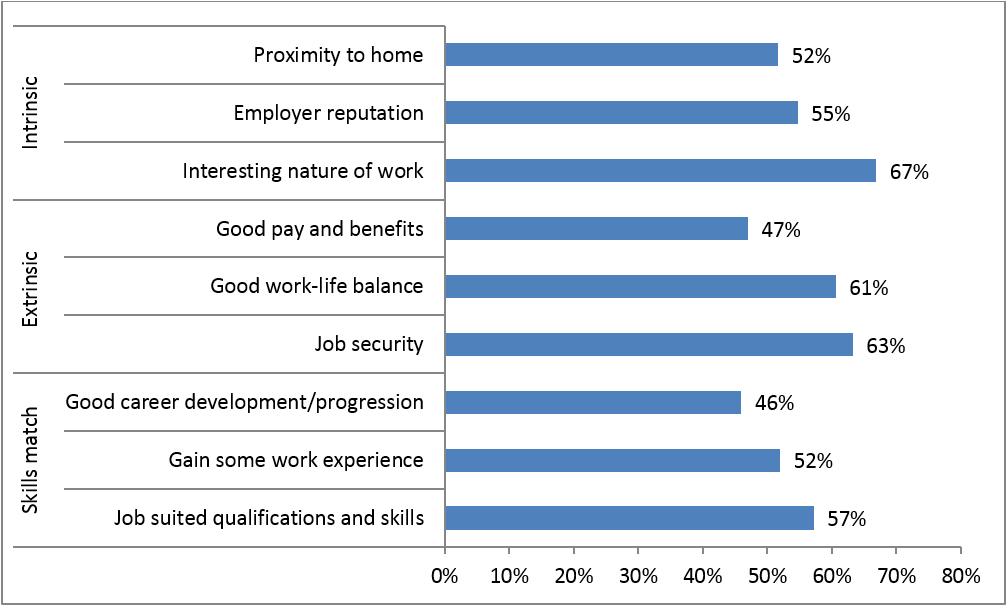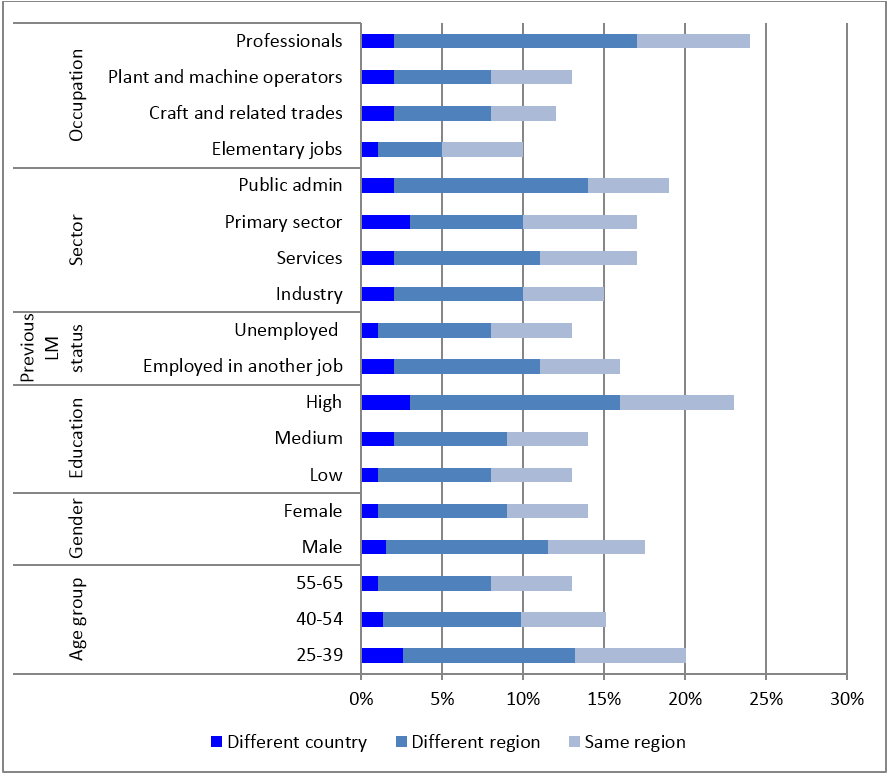Cedefop’s European skills and jobs survey (ESJ survey) highlights the complex challenges facing European skill systems.Skills matching ranks low as a motive in individuals’ job choices, while job mobility favours the most skilled. Skill gaps are prevalent in some occupations and sectors and for some population groups (re)entering the job market (e.g. long-term unemployed), yet too many of EU workers’ skills are underused and unidentified. Cedefop expert @K_Pouliakas notes that ‘a New skills agenda for Europe must further facilitate the transparency and validation of qualifications and skills and invest in better skills intelligence. This will ultimately foster mobility of the groups most in need.’
1. Hard facts for a ‘New skills agenda for Europe’
EU Member States have employed in recent years a number of policy levers on education and training, which affect, in different ways, the effectiveness of skill formation and matching in EU countries. These policy levers aim to influence the extent to which the qualifications, knowledge, skills and competences acquired by learners and workers strengthen their employability, ability to find sustainable employment and, ultimately, their productivity and innovation.
Within the strategic framework for European cooperation in education and training (ET 2020) [1], as well as the revised priorities for European cooperation in VET [2], a number of key policy priorities and instruments have been set up by national and EU policy-makers. Some of these refer to the need to promote work-based learning in all its forms, improve the quality of education and training systems, offer efficient and integrated guidance services and make validation of non-formal and informal learning feasible. Other policy initiatives are also high up in the policy agenda, such as continued efforts to improve the transparency and comparability of qualifications across Europe via the development of National qualification frameworks (NQFs), which link to the European qualification framework (EQF).
The New skills agenda for Europe proposed by the European Commission will soon suggest policy actions and initiatives that will seek to strengthen these European tools [3].
But what are the ‘hard facts’ regarding skills development and matching in EU labour markets that a new European skills agenda will have to confront? Cedefop’s European skills and jobs survey [4] (Cedefop, 2015a,b), a survey of about 49,000 adult EU employees carried out in 2014, has highlighted a number of significant challenges that European education and training policy must overcome in the medium term. Some key ones are discussed in more detail below:
#1 Limited weight of skills intelligence and career guidance on citizen’s job choices
EU adult workers were asked as part of the ESJ survey to identify the importance of several factors that influenced their decision to accept their current job (Figure 1). The survey reveals that the most important motivators driving individual’s job choice include the intrinsic satisfaction offered by the nature of the work, the provision of job security and the work-life balance. The overall match of individuals’ qualifications and skills with those needed by their job, both at the time of recruitment and over time as their career progresses, ranked much lower in significance.
It may be reasonable, especially during the recent years of economic downturn, for individuals to place a higher premium on the security of employment. However, the lower weight put on the match of their skills with their job requirements is concerning, as it may be associated with adverse long-term consequences, such as enhanced risk of unemployment and career instability.
Figure 1: Reasons for accepting current job, EU adult employees, 2014, EU28

NB: Percentage of respondents who ranked each factor with a score higher than 8 on a 0-10 importance scale, where 0 corresponds to ‘Not at all important’, 5 ‘Moderately important’ and 10 ‘Essential’.
Source: Cedefop European skills and jobs survey (ESJ survey),http://www.cedefop.europa.eu/en/publications-and-resources/publications/3072
#2 Limited and segmented mobility across EU countries and regions
The ESJ survey data confirm that labour market and geographical mobility in Europe is still very limited (Figure 2). Around one in five (17%) respondents indicated that they had to move home when they started their job with their current employer; 9% moved to a different region but within their own country, 6% moved but within the same region and only 2% moved to a different EU country.
Figure 2: Mobility of EU adult employees, 2014, EU28

NB: Percentage of respondents with positive responses to the question ‘Did you have to move home before you started working for your current employer? 1. Yes, to a different country; 2. Yes, to another region of the country you live in; 3. Yes, to the same region of the country you live in.’
Source: Cedefop European skills and jobs survey (ESJ survey),http://www.cedefop.europa.eu/en/publications-and-resources/publications/3072
Perhaps most crucially, the ESJ survey data highlight that those groups most in need of job mobility are exactly those least likely to engage in mobility. It is, on average, younger, high-educated, male professionals who are more likely to have moved to a different country or region prior to commencing their current job, motivated by the need to advance their career prospects. By contrast, geographic mobility is less common among females, older and lower-educated individuals and those who experienced a prior spell of unemployment or inactivity before finding their work.

